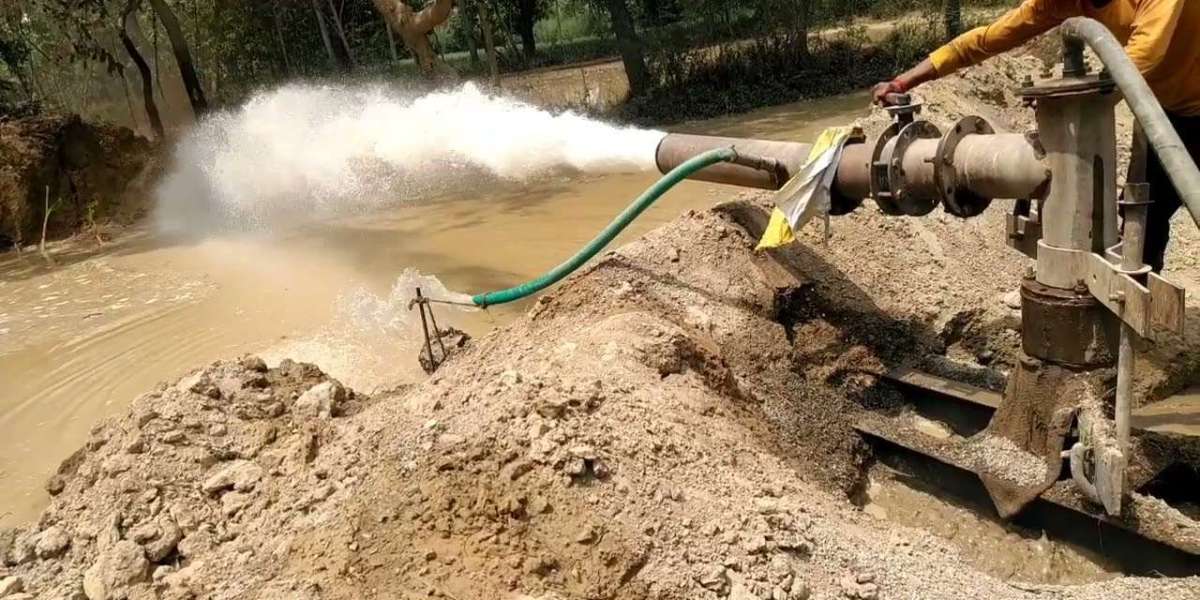Modern infrastructure, whether it involves skyscrapers, bridges, highways, or agricultural irrigation systems, relies heavily on foundational techniques that ensure both stability and sustainability. Among these techniques, pilling and tubewell drilling stand out as essential engineering solutions. While piling secures the stability of massive structures, tubewell drilling provides reliable water resources necessary for communities and industries. Together, they form the backbone of development, ensuring that construction projects are durable and that water supply remains consistent. Understanding their importance and how they are executed highlights the way human innovation adapts to environmental and technical challenges.
The Science Behind Pilling
Pilling, often referred to as piling in construction terminology, is the process of driving long structural elements into the ground to provide deep foundations for buildings and infrastructure. The essence of pilling is to transfer the load of a structure to deeper, stronger soil layers or bedrock when the upper surface layers are too weak to bear heavy loads. This makes it one of the most critical stages of construction for high-rise buildings, bridges, flyovers, and even large industrial plants.
The process requires advanced machinery and a deep understanding of soil mechanics. Engineers conduct detailed geotechnical surveys to determine the soil composition, depth of firm strata, and potential risks like waterlogging or seismic activity. Based on these studies, piles made of steel, concrete, or timber are driven into the ground using hydraulic hammers or bored drilling techniques. These piles act as load-bearing columns, distributing the weight evenly to ensure long-term stability and safety.
Different Types of Pilling Techniques
The method of pilling varies depending on the nature of the soil, the load requirements of the structure, and the environment where construction takes place.
Driven piles are hammered into the ground using pile drivers and are most commonly used in firm soil conditions. Bored piles, on the other hand, are created by drilling holes into the soil and filling them with concrete, making them suitable for urban areas where noise and vibration control is necessary. Sheet piles are thin interlocking steel sheets driven into soft soils, mainly to provide excavation support or retain water. Each technique addresses specific challenges, ensuring that construction projects remain feasible regardless of site conditions.
Tubewell Drilling and Its Growing Importance
While piling secures foundations above the ground, tubewell drilling secures resources beneath it. Tubewell drilling involves creating narrow, deep wells that tap underground aquifers, providing reliable access to groundwater. This method has revolutionized agriculture, especially in areas where rainfall is unpredictable, and surface water is scarce.
Tubewells are typically constructed using steel or PVC pipes fitted with strainers or filters. These are drilled into water-bearing strata using rotary or percussion drilling machines. A pump is then installed to lift the water to the surface. Farmers, industries, and even municipalities rely on tubewells for a sustainable water supply.
As global populations expand and climate change intensifies water scarcity, tubewell drilling has become a lifeline for millions of communities. In regions where rivers dry up in summer or where rainfall is insufficient, tubewells provide year-round access to groundwater, ensuring that crops thrive and households remain functional.
The Intersection of Engineering and Sustainability
Both pilling and tubewell drilling involve altering the natural environment to suit human needs. While they bring undeniable benefits, sustainability considerations must guide their application. In piling, engineers are adopting eco-friendly materials and low-noise machinery to reduce environmental impact in urban areas. For tubewell drilling, sustainable groundwater management is crucial to prevent over-extraction and depletion of aquifers.
For example, excessive tubewell drilling without recharge plans has led to falling water tables in many agricultural regions. To counter this, engineers and policymakers advocate for artificial recharge techniques such as rainwater harvesting, recharge pits, and percolation tanks. Similarly, pilling projects now incorporate advanced soil testing and simulation software to minimize unnecessary drilling and reduce carbon footprints.
Applications of Pilling in Infrastructure Development
The significance of pilling in modern construction cannot be overstated. Skyscrapers that touch the clouds rely on deep piles to resist wind loads and seismic forces. Bridges spanning rivers or valleys need pile foundations to transfer loads to stable soil beneath water or loose sediment. Offshore oil rigs, which stand in the middle of turbulent seas, are also supported by steel piles driven into seabeds.
In urban centers, where land is limited and vertical expansion is the only solution, piling allows engineers to build upward with confidence. Without it, high-rise towers would be at constant risk of settlement or collapse. Even relatively smaller projects like flyovers, metro rail networks, and industrial warehouses depend on pile foundations for long-term durability.
Applications of Tubewell Drilling in Agriculture and Beyond
Agriculture remains the biggest beneficiary of tubewell drilling. Farmers use tubewells to irrigate crops, ensuring consistent yields even during dry spells. This has been instrumental in achieving food security in countries with large agrarian populations.
Beyond agriculture, tubewells serve residential colonies, factories, and even emergency water supply systems. Many industries use groundwater drawn from tubewells for cooling, manufacturing, and cleaning processes. In disaster-prone areas, tubewells are lifesavers, providing clean drinking water when surface sources are contaminated.
Tubewell drilling also plays a role in hydrogeological studies, allowing scientists to study aquifers, groundwater recharge patterns, and contamination risks. Thus, it serves both practical and scientific purposes in addressing water challenges.
Innovations in Pilling Technology
The field of pilling has advanced significantly in recent decades. Modern pilling rigs are equipped with GPS technology, real-time monitoring systems, and automated controls that improve accuracy and efficiency. Vibration-free piling methods are now widely used in urban centers to reduce disturbance to nearby structures and residents.
Additionally, the introduction of composite piles—made from a combination of materials such as concrete and steel—has improved load-bearing capacity while reducing costs. Eco-friendly lubricants and noise suppression systems further minimize environmental impact, making piling compatible with sustainable urban growth.
Innovations in Tubewell Drilling
Tubewell drilling too has undergone transformative changes. Traditional hand-dug wells have been replaced by mechanized drilling rigs that can reach deeper aquifers in less time. Modern tubewells are fitted with energy-efficient pumps powered by solar panels, reducing dependence on fossil fuels. Smart monitoring systems measure groundwater levels in real time, helping farmers and industries use water more efficiently.
In some areas, dual-purpose tubewells are being developed, where wells not only extract groundwater but also act as recharge points during rainy seasons. These innovations are essential to balancing water use with long-term aquifer sustainability.
Economic Impact of Pilling and Tubewell Drilling
The economic significance of these engineering practices is enormous. Piling allows cities to expand vertically, making the most of limited land and driving urban economies. Without secure foundations, investment in large infrastructure would be impossible. Similarly, tubewell drilling fuels agricultural productivity, ensuring food supply chains remain strong and reducing dependence on seasonal rainfall.
Both industries also generate employment. Piling projects employ engineers, machine operators, and laborers, while tubewell drilling sustains drilling contractors, pump manufacturers, and maintenance technicians. Their multiplier effect on economic growth is evident across construction, agriculture, and industrial sectors.
Challenges and Solutions in Pilling
Piling projects often face challenges such as difficult soil conditions, noise pollution, and equipment limitations. In urban areas, ensuring that pile driving does not damage nearby buildings is a constant concern. Engineers now use advanced vibration monitoring tools and controlled drilling methods to mitigate such risks.
Another challenge is the high cost associated with deep foundations. To address this, engineers are increasingly adopting cost-effective techniques like prefabricated piles, which reduce both time and expenses. Research into sustainable materials, such as recycled concrete piles, also holds promise for future construction projects.
Challenges and Solutions in Tubewell Drilling
The greatest challenge in tubewell drilling is the risk of groundwater depletion. Overuse of aquifers has already led to sinking water tables in many regions, threatening long-term water security. Salinity intrusion, contamination, and pump inefficiency are other concerns.
Solutions include adopting groundwater management policies, encouraging rainwater harvesting, and educating farmers about efficient irrigation methods such as drip systems. Governments and NGOs are also investing in digital monitoring systems that track groundwater usage and prevent over-extraction.
Future of Pilling and Tubewell Drilling
The future of pilling and tubewell drilling lies in innovation and sustainability. Piling will continue to evolve with smart technologies that integrate artificial intelligence and robotics for precise foundation work. As cities grow taller and more complex, piles will need to adapt to extreme loads and climate conditions.
Tubewell drilling, on the other hand, will increasingly merge with renewable energy solutions such as solar-powered pumps and smart irrigation systems. Future developments will likely focus on balancing water extraction with aquifer recharge, ensuring long-term availability of this critical resource.
Conclusion
Pilling and tubewell drilling may operate in different domains—one focusing on structural stability and the other on water access—but both are indispensable to modern society. Together, they enable cities to rise higher and farmlands to stay greener. As the world continues to face challenges of urbanization, climate change, and population growth, these engineering practices will remain central to development.
The key lies in combining innovation with responsibility. With sustainable techniques and forward-looking policies, pilling and tubewell drilling will continue to unlock the depths of the earth, supporting humanity’s unyielding quest for progress and survival.



